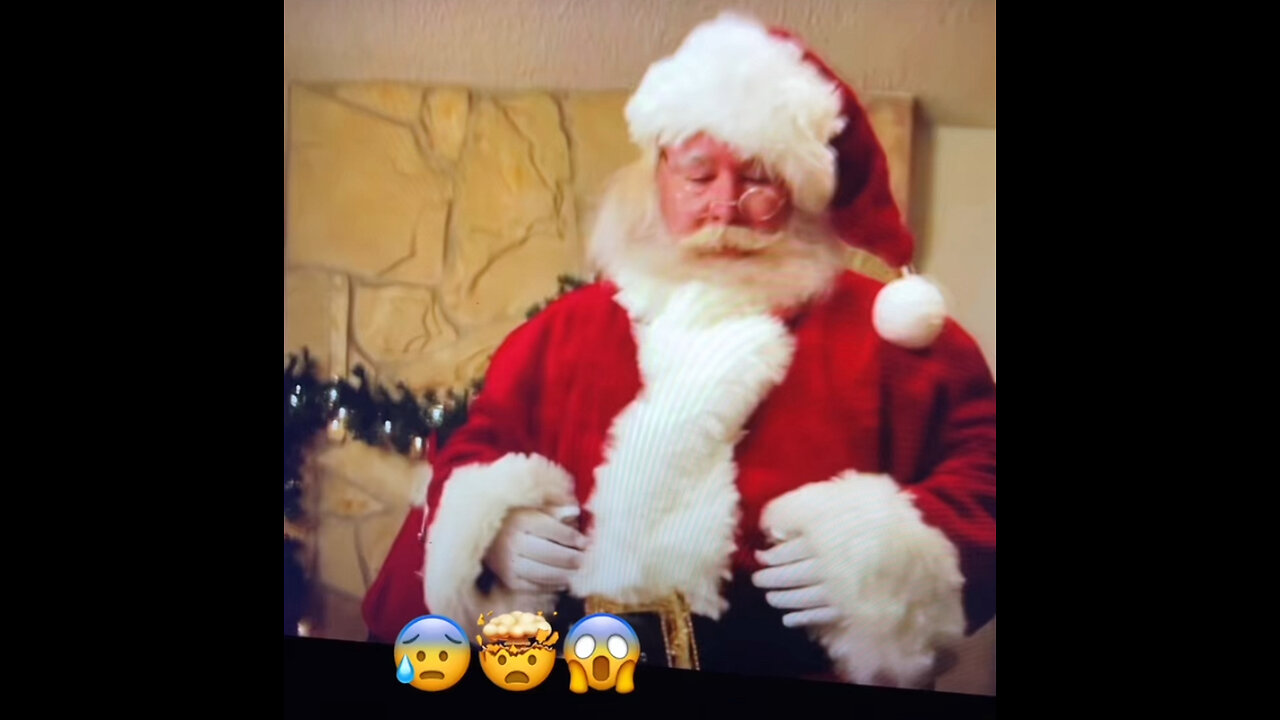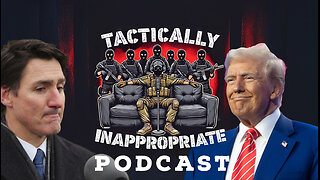Premium Only Content

Unwrapping Christmas: Esoteric Origins, Hidden Agendas, and the Psychology of Modern Traditions
Abstract
The phenomenon of Christmas extends beyond the surface-level festivities of gift-giving, joy, and religious reverence. It is a tapestry woven with threads of ancient paganism, esoteric symbolism, occult influences, and modern sociological manipulation. At its core, Christmas serves as a powerful ritual that conditions collective consciousness, propagates societal values, and perpetuates hidden agendas. This article explores the deeper implications of the holiday, analyzing its connections to secret societies, the psychological impacts of myths like Santa Claus, and its role in shaping societal structures.
1. The Ancient Foundation: Christmas as a Pagan Survival Mechanism
Christmas, like many widely celebrated holidays, is a fusion of older traditions appropriated and reframed for new cultural paradigms. To uncover its deeper meaning, we must revisit its origins in ancient paganism and the sacred significance of the winter solstice.
1.1 Winter Solstice and the Archetype of Renewal
• The Cosmic Cycle: Ancient cultures revered the winter solstice as the rebirth of the sun, a celestial event marking the return of light and life. The solstice was celebrated with rituals that honored death and renewal—a cycle mirrored in countless myths.
• Symbolic Corruption: While solstice rituals focused on harmonizing with natural cycles, modern Christmas distorts this connection by emphasizing materialism and artificial constructs.
1.2 Transformation Through Appropriation
• Saturnalia and Yule: Roman Saturnalia and Norse Yule celebrations featured themes of generosity, feasting, and the honoring of deities associated with agriculture and fertility. These traditions were incorporated into early Christian practices to ease the transition of pagans into the new religion.
• Esoteric Knowledge Preserved: While mainstream narratives paint these incorporations as innocuous, secret societies may have used them as vehicles for preserving deeper symbolic truths under the guise of religious conformity.
2. The Role of Secret Societies: Ritual Encoding in Plain Sight
Secret societies have long been accused of embedding esoteric symbolism into public traditions to subtly influence human consciousness. Christmas is no exception.
2.1 Freemasonry and the Archetypes of Light
• The Light-Bearer: Freemasonry venerates light as a metaphor for knowledge and spiritual awakening. This theme is mirrored in Christmas imagery, from the Star of Bethlehem to the lighting of trees and homes.
• Numerology and the Tree: The Christmas tree, with its evergreen symbolism and star-topped apex, can be interpreted as an encoded version of the Kabbalistic Tree of Life—a central structure in Western esotericism.
2.2 The Santa Archetype and Hidden Influences
• Odin, Saturn, and Beyond: Santa Claus, as a mythic figure, amalgamates various deities and archetypes. Odin’s sky-bound sleigh, Saturn’s role as the god of bounty, and even shamanic depictions of the red-and-white Amanita muscaria mushroom converge into the modern Santa persona.
• Anagram of Control: The anagram of “Santa” as “Satan” has been a topic of speculation, representing a duality—one of joyous innocence on the surface but potentially darker undertones tied to deception and control.
3. The Psychology of Deception: Santa Claus as a Gateway to Compliance
The myth of Santa Claus, often seen as harmless fun, carries significant psychological implications for children and society at large.
3.1 Conditioning Through Surveillance
• “He Sees You When You’re Sleeping”: The idea that Santa monitors children’s behavior introduces the concept of surveillance early in life. This normalizes the acceptance of authority figures as omnipresent and judgmental forces, paving the way for compliance with societal control mechanisms.
• Reward and Punishment: The binary system of “naughty or nice” instills a simplistic moral framework that discourages nuanced thinking, fostering a sense of external validation over intrinsic moral development.
3.2 Trust, Betrayal, and the Long-Term Impact
• Loss of Innocence: When children discover the falsehood of Santa Claus, it can lead to feelings of betrayal, subtly eroding trust in parental authority. This erosion may subconsciously fuel skepticism toward all forms of authority, from family structures to societal institutions.
• Imagination vs. Manipulation: While proponents argue that the Santa myth fosters creativity, critics contend that it is a form of manipulation that capitalizes on a child’s innate wonder for control.
4. Sociological Implications: A Tool for Cultural Engineering
Christmas operates as a finely tuned mechanism for shaping societal norms and behaviors, often in ways that benefit those in positions of power.
4.1 Consumerism as Ritual
• Economic Dependency: The commercialization of Christmas drives billions in revenue, making it a cornerstone of Western economies. This financial dependence ensures societal participation in the holiday, regardless of individual beliefs.
• Material Over Meaning: The relentless focus on gift-giving shifts attention away from spiritual or relational values, conditioning individuals to equate love and worth with material possessions.
4.2 Fragmentation of Authentic Connection
• Synthetic Traditions: Many modern Christmas practices are designed to replace or overshadow more authentic, community-based traditions, fostering isolation and dependence on external systems for fulfillment.
• Family Dynamics: The pressure to create a “perfect Christmas” often exacerbates familial tensions, highlighting disparities and reinforcing societal hierarchies.
5. Christmas as a Gateway Ritual: Hidden Agendas and Mass Participation
From an esoteric perspective, Christmas can be seen as a mass ritual that channels collective energy and reinforces archetypal patterns.
5.1 The Ritual Mechanics
• Energy Harvesting: Participation in synchronized traditions, such as lighting trees or singing carols, generates collective energy. In esoteric thought, such energy can be directed toward specific outcomes, whether for unity or control.
• Reinforcement of Archetypes: Symbols like the tree, star, and gifts tap into universal archetypes that resonate on subconscious levels, influencing thought patterns and behaviors.
5.2 Secret Societies and the Broader Agenda
• Perpetuation of Control: By embedding their symbols and rituals into mainstream traditions, secret societies may aim to subtly guide human consciousness toward specific ends, often under the guise of unity and celebration.
• Blurring the Spiritual Path: The commercialization and distortion of sacred traditions dilute their original purpose, leaving individuals disconnected from authentic spiritual practices.
6. Reclaiming Christmas: A Path Toward Conscious Celebration
Awareness is the first step in transforming Christmas from a tool of manipulation into a meaningful experience.
6.1 Personalizing Traditions
• Create Your Own Rituals: Incorporate practices that resonate with your values, such as mindfulness, gratitude, or acts of service.
• Reconnect with Nature: Honor the natural cycles by spending time outdoors, meditating on the solstice, or engaging in eco-friendly celebrations.
6.2 Educating the Next Generation
• Fostering Critical Thinking: Teach children the origins and meanings of traditions, encouraging them to question and explore rather than passively accept.
• Balancing Myth and Truth: Share the magic of imagination while grounding it in honesty, fostering trust and open dialogue.
Conclusion: The Choice to Awaken
Christmas, at its core, is a potent mixture of ancient wisdom, modern manipulation, and deep psychological influence. By exploring its esoteric roots and understanding its societal impact, we can break free from unconscious participation and reclaim the holiday as a celebration of authenticity, connection, and renewal. The power to reshape Christmas lies not in rejecting it but in consciously engaging with its layers, transforming it into a reflection of our highest values and aspirations.
-
 1:04
1:04
FragmentsOfTruth
4 days agoThe Hidden Truth About Sugar: How It Shuts Down Your Immune System
213 -
 11:16
11:16
IsaacButterfield
1 day ago $1.64 earnedThe Most Dangerous Man In The World
16.1K3 -
 1:03:56
1:03:56
Kyle Rittenhouse Presents: Tactically Inappropriate
15 hours ago $2.01 earnedNo more income tax?
16K2 -
 21:37
21:37
The Finance Hub
17 hours ago $3.18 earnedBREAKING: JOE ROGAN JUST DROPPED A MAJOR BOMBSHELL!!!
11.1K9 -
 16:37
16:37
Alabama Arsenal
12 hours ago $0.56 earnedOtter Creek Labs Infinity
6.58K -
 7:18
7:18
Randi Hipper
14 hours agoHAWK TUAH DELETES NEW PODCAST AFTER CRYPTO SCAM
8K2 -
 19:47
19:47
Degenerate Jay
22 hours ago $0.52 earnedThe Missed Potential Of Fullmetal Alchemist Video Games
12.6K -
 59:43
59:43
Trumpet Daily
21 hours ago $4.74 earnedCorruption Like You Never Imagined - Trumpet Daily - Feb. 6, 2025
17.7K29 -
 1:01:56
1:01:56
PMG
1 day ago $0.80 earnedAnti-Deportation Rallies Gain Momentum While Elon Comes to America’s Rescue!
9.63K3 -
 4:10:31
4:10:31
Alex Zedra
11 hours agoLIVE! Come hang!
65.6K9